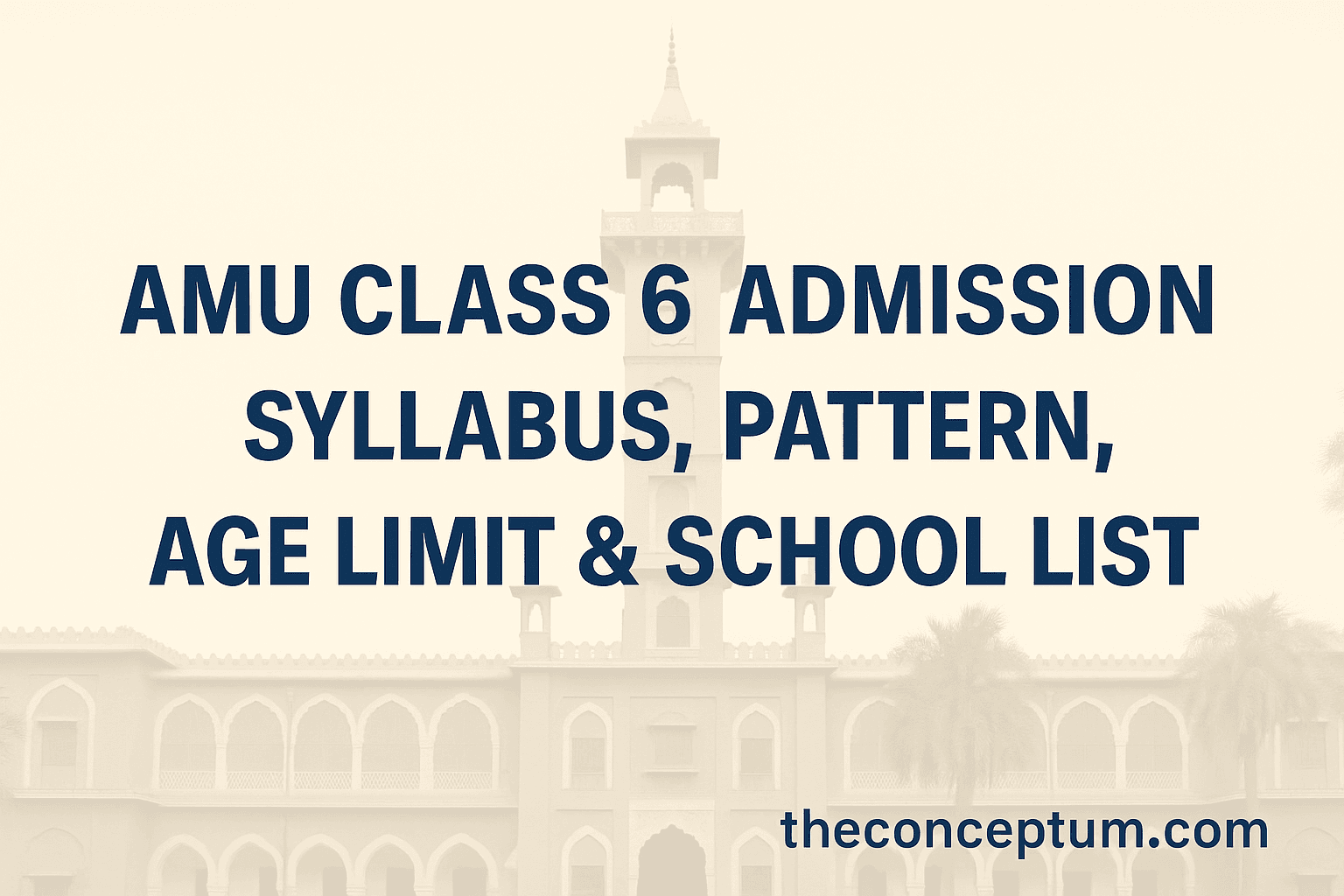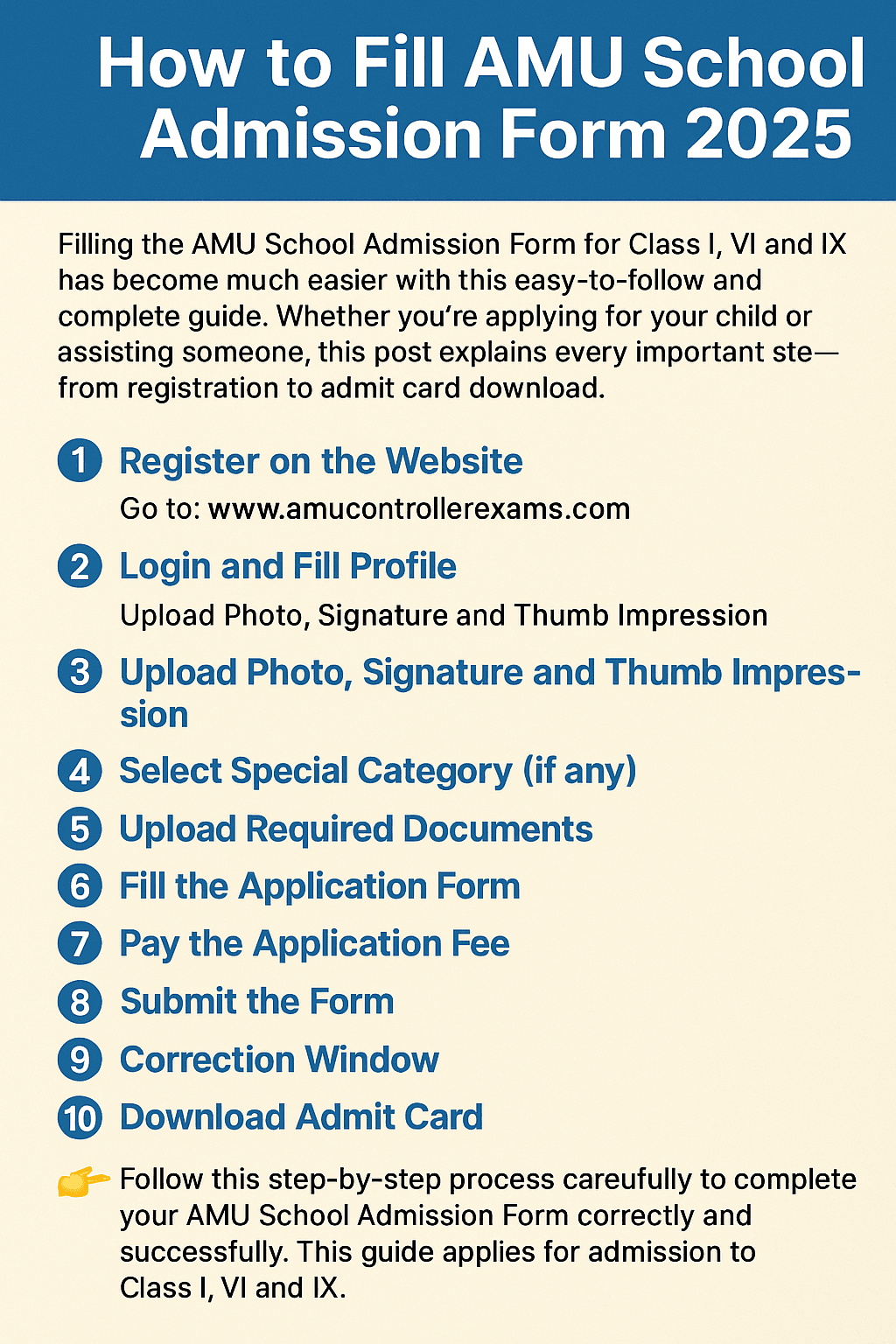
AMU Class 6 Admission 2026 – Complete Guide to Syllabus, Pattern, Age Limit and Schools
04/06/2025
How to Fill AMU School Admission Form 2026 – Step-by-Step Guide for Class I, VI and IX
05/06/2025Vision Behind the Foundation of AMU
Visionary: Sir Syed Ahmad Khan, a pioneering educationist and social reformer, identified the intellectual and cultural decline of Muslims in India after the 1857 revolt. He powerfully believed that modern scientific education, integrated with Islamic values, was essential for the revival and progress of the Muslim community in British India.
His transformative vision was inspired by the academic frameworks of Oxford and Cambridge, leading him to imagine a similar institution for Indian Muslims that would nurture critical thinking and global awareness.
1875 – Laying the Foundation of MAO College
- Date: 24 May 1875
- Name: Muhammadan Anglo-Oriental (MAO) College
- Location: Aligarh, Uttar Pradesh
- Goal: To merge Western education in Science, English, and Mathematics with Islamic teachings
- Model: Based on elite British universities, particularly Cambridge
- Support: Funded through generous donations from Indian and British patrons
- Legacy: This powerful milestone marked the foundation of AMU as the first modern Muslim institution in India
1875 – Laying the Foundation of MAO College
1886 – All India Muhammadan Educational Conference
- Founder: Sir Syed Ahmad Khan
- Purpose: To promote Muslim education nationwide and create the foundation for elevating MAO College to university status
1920 – Formation of AMU: A Historic Leap
- Act Passed: Aligarh Muslim University Act, 1920
- Transformation: MAO College was officially converted into Aligarh Muslim University (AMU)
- Legal Status: Declared a Central University of national importance
- First Vice-Chancellor: Mohammad Ali Mohammad Khan, Raja of Mahmudabad (Honorary)
- Commitment: Focused on academic upliftment, particularly for the Muslim community, while remaining open to all backgrounds
Expansion after Independence
With the support of the Government of India, AMU expanded tremendously in academic and infrastructural dimensions.
- New Faculties: Medicine (JNMC), Law, Engineering, Social Sciences
- Outreach Centres: Kishanganj (Bihar), Malappuram (Kerala), Murshidabad (West Bengal)
Present-Day AMU
- Status: A prestigious Central University, administered under the Ministry of Education
- Recognition: Globally acclaimed for research excellence, inclusive education, and cultural diversity
- Attraction: Draws thousands of students from across India, South Asia, the Middle East, and Africa
Timeline at a Glance
| Year | Landmark Event |
|---|---|
| 1857 | Post-revolt realisation by Sir Syed for Muslim upliftment |
| 1875 | Foundation of MAO College |
| 1886 | Muhammadan Educational Conference launched |
| 1920 | Aligarh Muslim University formally established |
Historic Schools of AMU and Their Visionary Founders
- STS School (1875) – Founded by Sir Syed Ahmad Khan; first modern school for Muslims
- Women’s College (1906) – Founded by Sheikh Abdullah (“Papa Mian”)
- Ahmadi School for the Visually Challenged (1927) – By Sahibzada Aftab Ahmad Khan
- Raja Mahendra Pratap Singh AMU City High School (1928) – By Maulana Tufail Ahmad Manglori
- AMU Girls’ School (1944) – AMU administration
- Abdullah School (1946) – Named after Begum Abdullah
- ABK High School (Girls) (1946) – For girl students, run parallel to the boys’ school
- Sayyid Hamid Sr. Secondary School (1997) – Named after former VC
- Sr. Secondary School (Girls) – Science, Commerce, and Arts
- City Girls’ High School – Reaches urban students outside campus
Halls and Hostels – Centres of Student Life
- Sir Syed Hall – MAO legacy, includes Strachey Hall (1885)
- Aftab Hall (1932) – Named after first Pro-VC
- Allama Iqbal Hall – For PG and scholars
- Abdullah Hall – Largest girls’ hostel
- Nadeem Tarin Hall – Eco-friendly, for professional students
- Dr. B. R. Ambedkar Hall – Inclusive housing
- Mohsinul Mulk Hall – One of the oldest
- Sir Ziauddin Hall – For Science/Engineering students
- Sarojini Naidu Hall – Named after the nightingale of India
- Begum Sultan Jahan Hall – Girls’ hall
- Chacha Nehru Hall – For school students
- Indira Gandhi Hall – Female housing
- Munshi Meherullah Hall – Promotes social reform
Key Faculties and Professional Colleges of AMU
- Faculty of Theology – Separate Sunni and Shia departments
- Ajmal Khan Tibbiya College (1927) – Unani medicine
- Jawaharlal Nehru Medical College (1962) – MBBS, MD, Super Speciality
- Zakir Husain Engineering College (1935) – One of India’s top B.Tech institutes
- Faculty of Law (1891) – BA LLB, LLM, PhD
- Faculty of Arts – Includes English, Urdu, Arabic, etc.
- Faculty of Social Sciences (1969) – Political Science, Psychology, etc.
- Faculty of Commerce (1944) – M.Com, MBA
- Faculty of Science – Core sciences and research
- Faculty of Life Sciences – Biotech, Biochem, Microbio
- Agricultural Sciences – In collaboration with ICAR
- Faculty of Management Studies – Renowned MBA program
- Faculty of International Studies – West Asian studies, languages
- Faculty of Education – Educational psychology and training
AMU’s Expanding Reach: Off-Campus Centres
Objective: Expand AMU’s legacy to underserved areas
- Malappuram, Kerala (2010) – B.Ed, MBA, Law
- Murshidabad, WB (2010) – Legal, Education, Management
- Kishanganj, Bihar (2013, launched 2014) – Growing to Science and Tech
- Proposed Centres: Assam, Madhya Pradesh, Eastern UP
Best Resources and Links for Students
Conclusion
The Foundation of AMU was not just the birth of an educational institution but the dawn of a powerful intellectual revolution. From Sir Syed Ahmad Khan’s vision to its present status as a globally reputed Central University, AMU stands tall as a symbol of inclusive growth, research, and societal upliftment.
With its historic legacy, modern infrastructure, and visionary goals, AMU continues to shape leaders of tomorrow.



